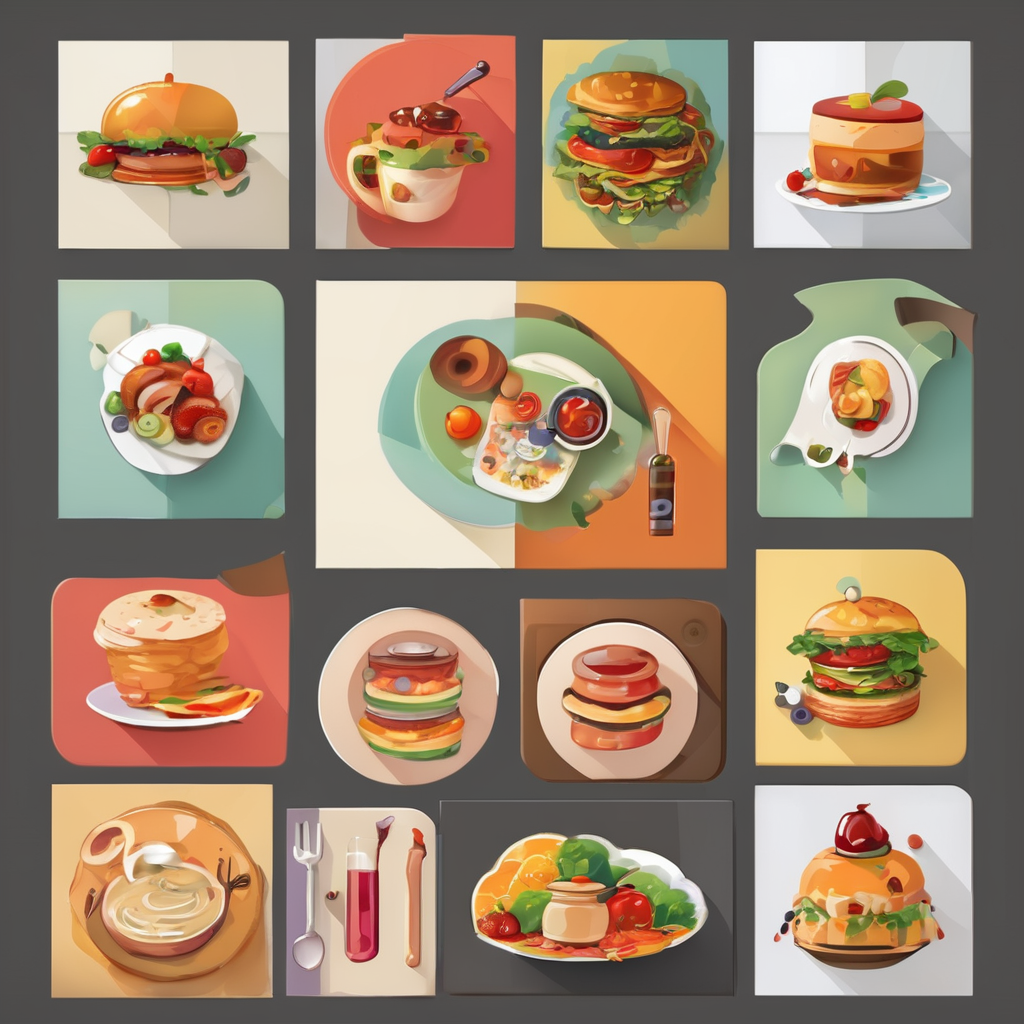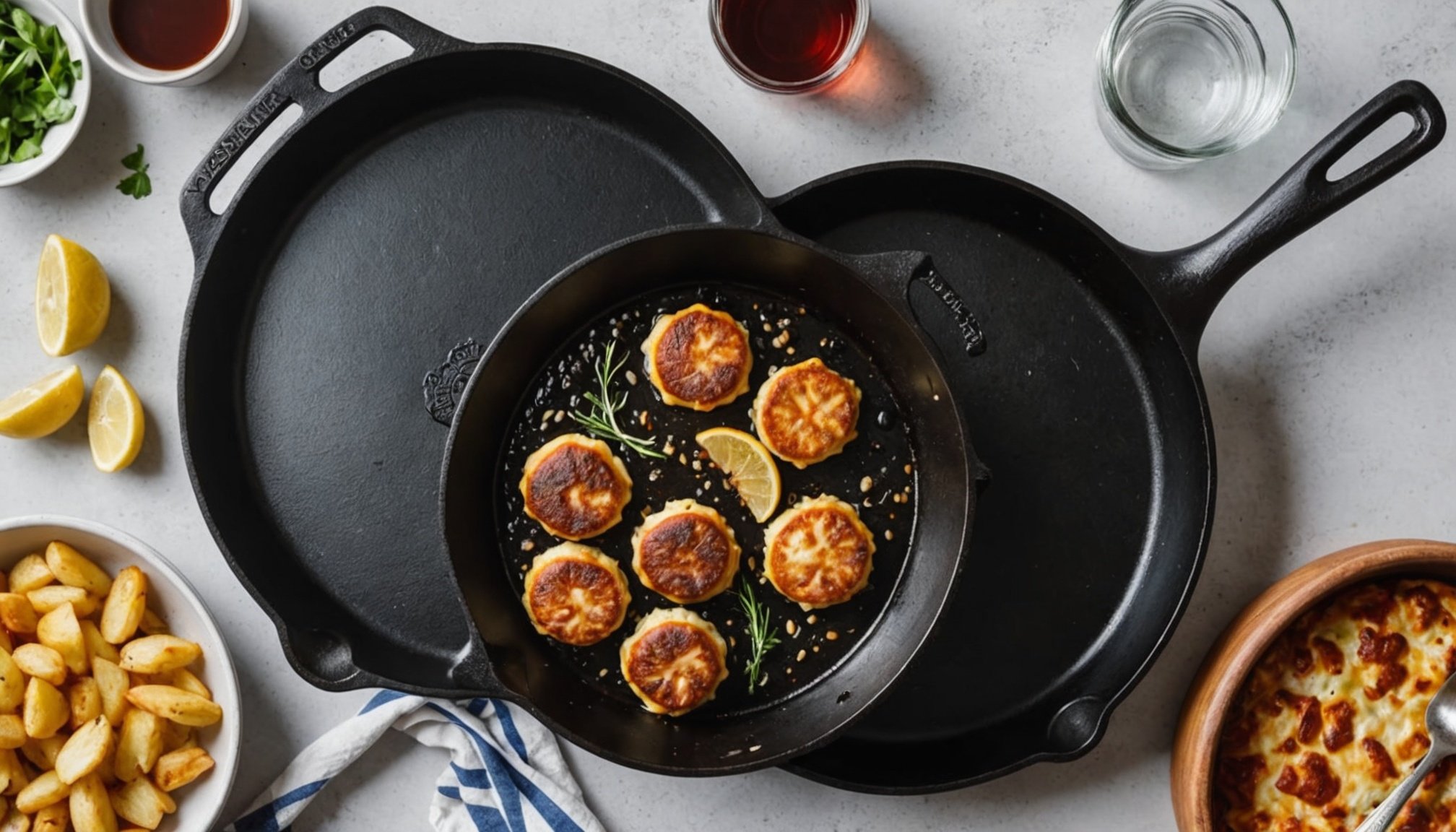Overview of Cast Iron Skillets
Understanding the basics of cast iron skillets is essential for any home cook looking to elevate their culinary game. Cast iron cookware, dating back to the 18th century, has stood the test of time due to its durability and ability to retain heat efficiently. These skillets are crafted from molten iron poured into molds, creating a robust and versatile cooking tool suited for a variety of dishes.
One of the key benefits of cast iron cooking is its excellent heat retention, which ensures even cooking temperatures, making it ideal for searing meats or baking. Additionally, cast iron skillets develop a natural non-stick surface with proper seasoning over time, eliminating the need for synthetic coatings. This not only enhances the flavor of the food but also contributes to a healthier cooking approach.
Also read : Crafting a Chic, Pet-Friendly Kitchen in the UK: Top Tips for a Stylish and Functional Space
When comparing cast iron to other materials, like stainless steel or non-stick pans, a few distinctions arise. While stainless steel is also durable, it lacks the exceptional heat retention properties of cast iron. Non-stick pans, though easy to clean, can wear out over time and aren’t suitable for high-heat cooking, unlike the resilient cast iron skillets. Selecting the right type and material for your cooking needs is crucial for achieving the desired culinary results.
Selecting the Right Size and Type
Choosing the appropriate cast iron skillet sizes and types for your kitchen is crucial to optimise your cooking experience. In the UK, certain sizes are popular, like the 10-inch skillet, ideal for everyday use. It provides a balance between cooking surface and portability, sufficient for small family meals. For larger gatherings, a 12-inch skillet may be preferred, offering more space for cooking multiple servings. Alternatively, smaller 8-inch skillets suit single servings or side dishes perfectly.
Additional reading : Revamping Your Classic UK Kitchen: Top Strategies for Enhanced Energy Efficiency
When assessing skillet types, consider options like flat, deep, and combination skillets. A flat skillet offers straightforward cooking for pancakes or searing meats, while a deep skillet provides versatility for stews or casseroles due to its enhanced depth. Combination skillets, possessing elements of both, allow diverse applications in culinary tasks.
Your cooking style and the portion sizes you typically prepare should guide the size and type of cast iron skillets you select. For a diverse repertoire of recipes, owning a mix of sizes can be beneficial to meet varying demands effortlessly while embracing the robust quality of cast iron cooking.
Care and Maintenance of Cast Iron Skillets
Proper care and maintenance of cast iron skillets is crucial to preserve their durability and cooking efficiency. Begin with regular seasoning, a process of coating the skillet with oil and baking it to build a natural non-stick surface. Seasoning not only aids in food release but also protects the pan from rust.
There are common errors to avoid in cast iron care. Never soak your skillet or use abrasive cleaning materials. Instead, wash it with mild soap, rinse quickly, and dry thoroughly. If needed, a paste of baking soda and water can help remove stubborn food residue without ruining the seasoning.
For long-term maintenance, store your skillet in a dry place to prevent moisture from causing rust. Occasionally re-season the skillet when it starts losing its shine or when food begins to stick more than usual. Additionally, avoid cooking acidic foods frequently, as they can strip the seasoning over time.
Following these steps efficiently prolongs the life of your cast iron skillet, ensuring it continuously delivers optimal performance and remains a staple in your kitchen for years.
Popular Brands of Cast Iron Skillets
In the realm of best cast iron brands, several names stand out for their quality and performance. Knowing the reputable brands can help you make an informed decision when purchasing cookware for your kitchen.
Brand Comparison Table
A comparison table can offer insight into various brands’ unique features. Consider aspects like weight, handle design, and heat distribution capabilities to find a skillet that aligns with your needs.
Notable Features of Each Brand
Each brand offers distinct characteristics that may suit different cooking preferences. Some brands focus on innovative handle designs for better grip, while others excel in heat retention technology. Identifying these notable features can assist you in choosing the right equipment for your culinary creations.
Price Range Breakdown
Understanding the price range breakdown of popular brands is crucial for budget-conscious shoppers. While some options are affordable for everyday use, others might target professional cooks with higher-quality materials, reflecting in the price. Balancing cost with value ensures you obtain a product that enhances your cooking without exceeding your financial boundaries.
Practical Cooking Advice for UK Kitchens
Utilising cast iron skillets in UK kitchens can elevate traditional dishes to new culinary heights. Cooking with cast iron is particularly beneficial for the high, even heat it delivers, perfect for searing meats and achieving crisp textures. Popular UK dishes, such as toad in the hole or Welsh rarebit, benefit from this steady heat.
When adapting UK recipes, consider techniques and tips that maximise the benefits of cast iron. Preheat the skillet thoroughly before adding ingredients, ensuring even cooking and enhancing flavours. Use a modest amount of oil to prevent sticking, thanks to the natural non-stick properties developed over time through seasoning.
Highlighting recipes for cast iron showcases its versatility. Try a classic steak and ale pie with a flaky pastry crust that cooks perfectly in cast iron, providing a rich, even bake. Scones and crumpets, which require a controlled heat, also cook wonderfully in these skillets.
In essence, embracing UK cooking styles with cast iron not only adds depth of flavour but also introduces new textures and aromas to familiar dishes, enhancing everyday meals with professional results.
Comparing Different Cast Iron Skillets
Evaluating different cast iron skillets revolves around understanding their performance metrics, user feedback, and visual features.
Performance Metrics
Performance metrics are crucial in skillet comparisons. Factors to consider include heat distribution, durability, and ease of maintenance. A well-performing skillet is one that heats evenly, ensuring consistent cooking results for various recipes. Durability is another key aspect, as robust construction ensures longevity, while a well-maintained skillet offers ease of use over time.
User Reviews and Ratings
Listening to user reviews and ratings provides insights from actual users about their experiences with different skillets. Positive reviews often highlight excellent heat retention and ease of seasoning, while lower ratings might point to issues like weight or handle comfort. Real-world feedback can guide you in choosing cookware that suits your specific kitchen needs.
Visual Comparison of Skillets
A visual comparison of skillets aids in understanding differences in design and size. Look for features such as handle length and spout designs, which affect usability and aesthetics. Comparing visual elements helps in selecting a skillet that not only performs well but also complements your kitchen’s style.

